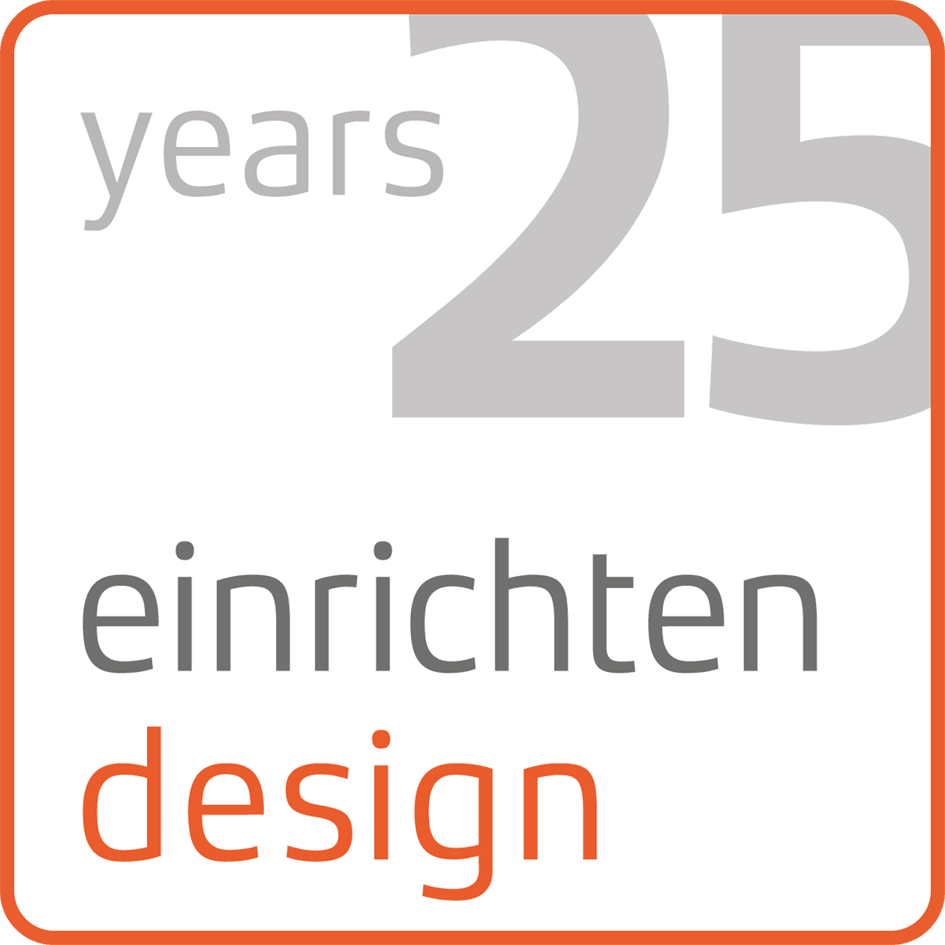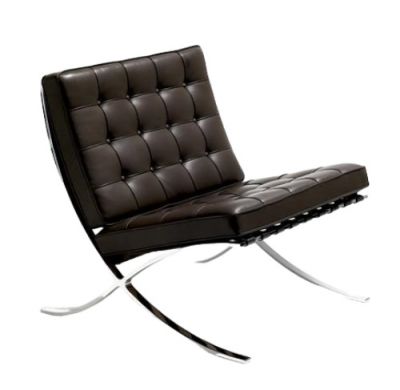- Trained product experts as personal contacts
- Loyalty pays off: 1.5% annual bonus for our customers
- Worldwide delivery from Germany
- Owner-managed for over 25 years - trust our experience!
- Secure packaging and fast shipping - thanks to our professionals!
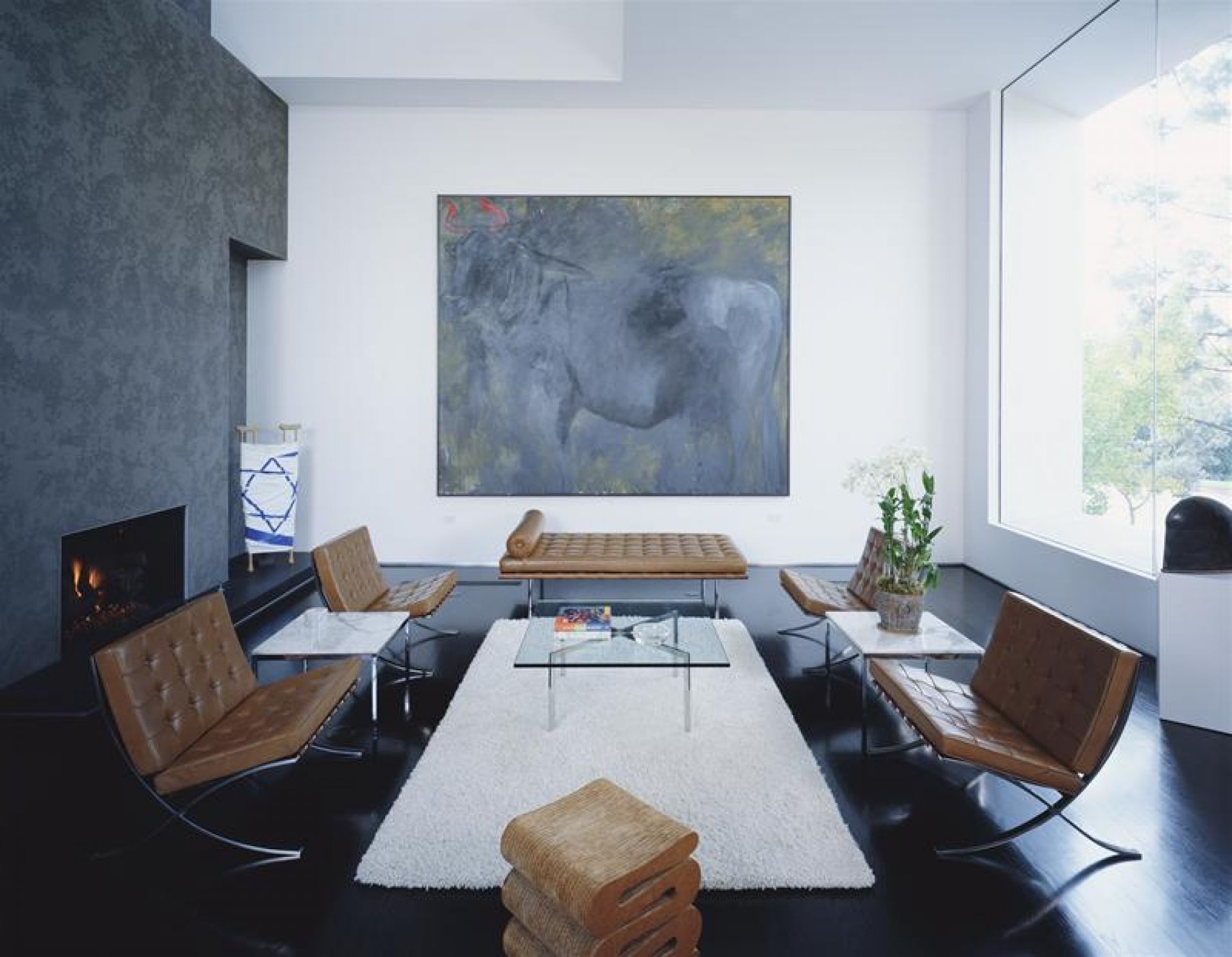









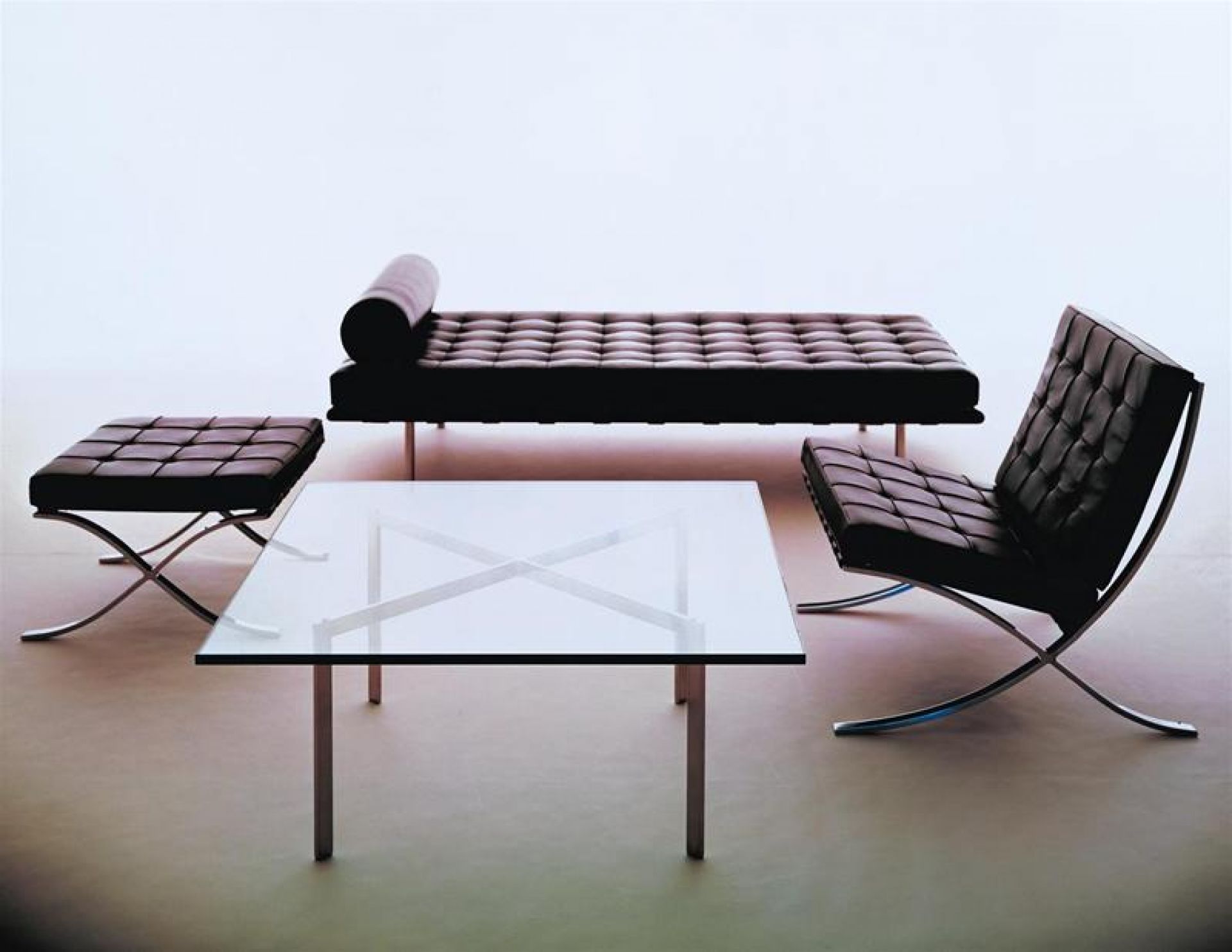
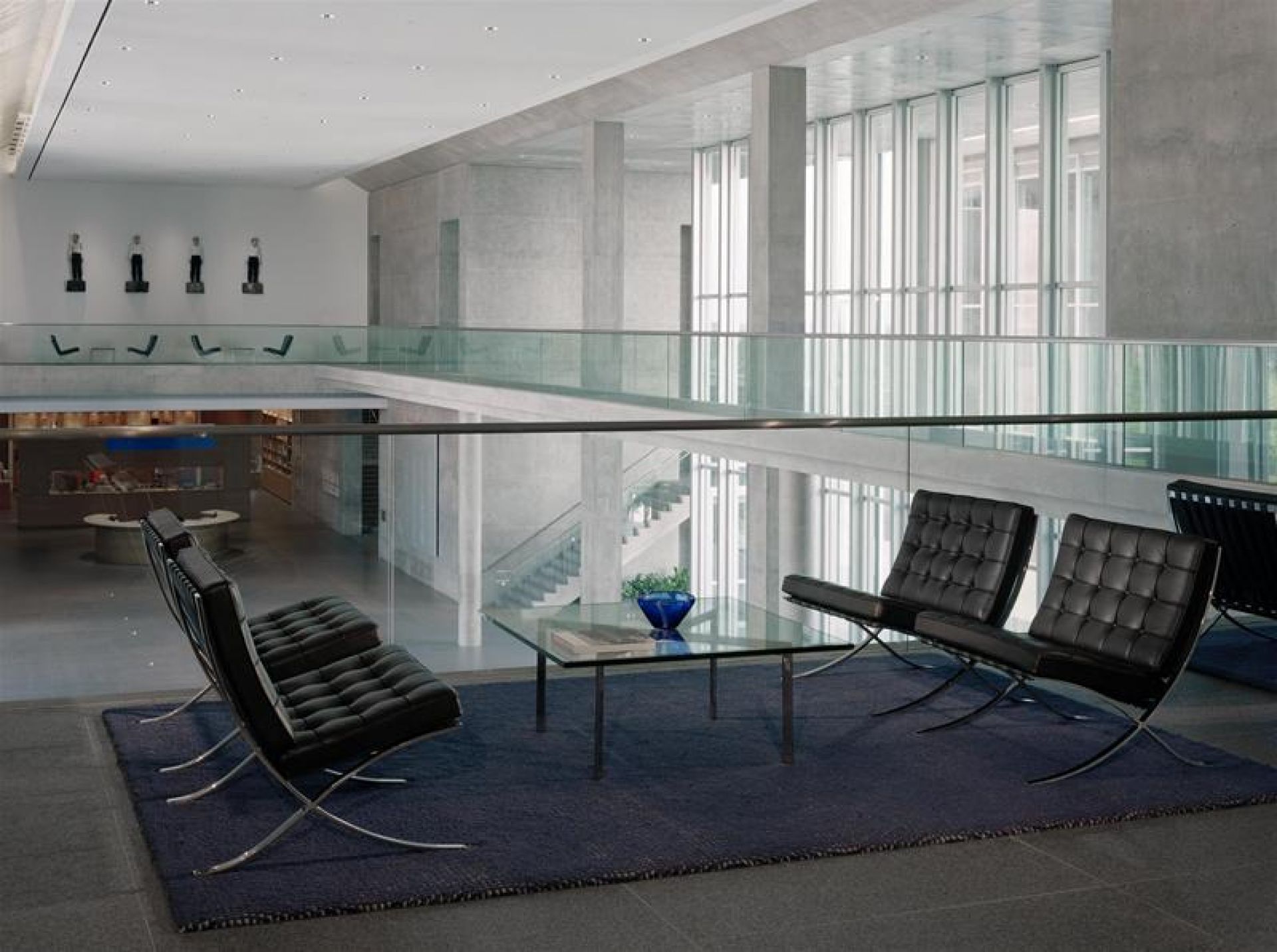












































Look at me from every angle!
Barcelona coffee table Knoll International
Your advantages with einrichten design
personal, individual, passionately
-
Description
Crystal joins leather: Barcelona coffee table by Knoll
In 1929, the Barcelona coffee table completed the series of the same name from the designer Ludwig Mies van der Rohe. The delicate crystal glass on the noble chrome-plated steel base forms a visual contrast to the leather surfaces of the rest of the furniture from the collection. At the same time, the coffee table with its crossed table legs and square shape perfectly complements the quilted pattern of the Barcelona leather furniture.
Thanks to the modern style paired with simple sophistication, the table also blends wonderfully into any other living and working landscape. Especially beautiful are the soft reflections that appear in the room as soon as the light refracts in the glass top.
In 1977, the coffee table received an award from the Museum of Modern Art in New York.
Once upon a time in Barcelona…
One of the classics of the Knoll International collections is the Barcelona series with its historical background. As a rising figure of the modernist movement, Ludwig Mies van der Rohe was selected to design the Weimar Republic’s Pavilion for the Barcelona Industrial Exposition of 1929.
Through masterful proportioning and planning, Mies created a rhythmic and entirely unprecedented space, which elevated industrial-age materials to a level of grace never before achieved. Inside, Mies included chairs and stools conceived as a resting place for the King and Queen of Spain. Mies is thought to have based the designs on the campaign chairs of Ancient Rome.
The Barcelona Pavilion is recognised as a defining achievement of modern architecture, as are the accompanying Barcelona Chairs. Since the formally granted production rights to the Barcelona Chair and Stool in 1953, the designs immediately became a signature of the Knoll brand and have been built to Mies van der Rohe’s exacting standards ever since.
Ludwig Mies van der Rohe
Ludwig Mies van der Rohe, born in 1886 in Germany, began his career working in his father's stonemasonry business. After an apprenticeship with furniture designer Bruno Paul in Berlin, he joined the office of architect Peter Behrens, whose work presaged the modern movement. In 1912, Mies established his own office in Berlin, and later became a member of the Deutscher Werkbund and Director of the Bauhaus.
“I feel that it must be possible to harmonise the old and new in our civilisation.” – Ludwig Mies van der Rohe
He immigrated to the United States in 1938, setting up a practice in Chicago. His buildings include the German Pavilion for the 1929 Barcelona Exposition, the Tugendhat Villa in Brno, Czechoslovakia, the Seagram Building, designed with Philip Johnson, a cluster of residential towers along Chicago's Lakeshore Drive in Chicago, and the Illinois Institute of Technology campus, where he was the director of architecture. He was also considered a close friend and mentor to Florence Knoll during her time at the Illinois Institute of Technology.
Knoll International – A belief in modern design
In 1938, Knoll International was founded by Hans and Florence Knoll, who embraced the creative genius at the Bauhaus School and the Cranbrook Academy of Art to create new types of furniture and environments for the workplace. Their approach was to combine craftsmanship with technology through the use of design. Florence Knoll also developed the idea of the modern office and pioneered the interior design profession.
Knoll has been recognized internationally for creating workplace and residential furnishings that inspire, evolve, and endure. With its thoughtful, inventive products Knoll responds to individual work styles and transcends multiple generations. Knoll's commitment to modern, sustainable design and understanding of the workplace results in a unique portfolio. Here, the latest collections sit alongside modern classics and iconic products.
For more than 80 years now Knoll has remained true to the Bauhaus design philosophy that modern furniture should complement architectural space, not compete with it. Therefore, they use modern design to connect people to their work, their lives, their world. The essence of it all: modern living and working with a contemporary approach without losing a connection to the past.
Material and format
The Barcelona coffee table is 100 cm wide and 100 cm deep. You can choose the height between 35 cm and 46 cm, depending on your needs.
The tabletop is made of 15 mm thick crystal glass and reveals the robust frame made of high-gloss chrome-plated flat steel.
Special feature: the KnollStudio logo and Mies van der Rohe's signature are embossed into the base of each table.
More - Dimensions / Infos
- Shipping & Payment
Crystal joins leather: Barcelona coffee table by Knoll
In 1929, the Barcelona coffee table completed the series of the same name from the designer Ludwig Mies van der Rohe. The delicate crystal glass on the noble chrome-plated steel base forms a visual contrast to the leather surfaces of the rest of the furniture from the collection. At the same time, the coffee table with its crossed table legs and square shape perfectly complements the quilted pattern of the Barcelona leather furniture.
Thanks to the modern style paired with simple sophistication, the table also blends wonderfully into any other living and working landscape. Especially beautiful are the soft reflections that appear in the room as soon as the light refracts in the glass top.
In 1977, the coffee table received an award from the Museum of Modern Art in New York.
Once upon a time in Barcelona…
One of the classics of the Knoll International collections is the Barcelona series with its historical background. As a rising figure of the modernist movement, Ludwig Mies van der Rohe was selected to design the Weimar Republic’s Pavilion for the Barcelona Industrial Exposition of 1929.
Through masterful proportioning and planning, Mies created a rhythmic and entirely unprecedented space, which elevated industrial-age materials to a level of grace never before achieved. Inside, Mies included chairs and stools conceived as a resting place for the King and Queen of Spain. Mies is thought to have based the designs on the campaign chairs of Ancient Rome.
The Barcelona Pavilion is recognised as a defining achievement of modern architecture, as are the accompanying Barcelona Chairs. Since the formally granted production rights to the Barcelona Chair and Stool in 1953, the designs immediately became a signature of the Knoll brand and have been built to Mies van der Rohe’s exacting standards ever since.
Ludwig Mies van der Rohe
Ludwig Mies van der Rohe, born in 1886 in Germany, began his career working in his father's stonemasonry business. After an apprenticeship with furniture designer Bruno Paul in Berlin, he joined the office of architect Peter Behrens, whose work presaged the modern movement. In 1912, Mies established his own office in Berlin, and later became a member of the Deutscher Werkbund and Director of the Bauhaus.
“I feel that it must be possible to harmonise the old and new in our civilisation.” – Ludwig Mies van der Rohe
He immigrated to the United States in 1938, setting up a practice in Chicago. His buildings include the German Pavilion for the 1929 Barcelona Exposition, the Tugendhat Villa in Brno, Czechoslovakia, the Seagram Building, designed with Philip Johnson, a cluster of residential towers along Chicago's Lakeshore Drive in Chicago, and the Illinois Institute of Technology campus, where he was the director of architecture. He was also considered a close friend and mentor to Florence Knoll during her time at the Illinois Institute of Technology.
Knoll International – A belief in modern design
In 1938, Knoll International was founded by Hans and Florence Knoll, who embraced the creative genius at the Bauhaus School and the Cranbrook Academy of Art to create new types of furniture and environments for the workplace. Their approach was to combine craftsmanship with technology through the use of design. Florence Knoll also developed the idea of the modern office and pioneered the interior design profession.
Knoll has been recognized internationally for creating workplace and residential furnishings that inspire, evolve, and endure. With its thoughtful, inventive products Knoll responds to individual work styles and transcends multiple generations. Knoll's commitment to modern, sustainable design and understanding of the workplace results in a unique portfolio. Here, the latest collections sit alongside modern classics and iconic products.
For more than 80 years now Knoll has remained true to the Bauhaus design philosophy that modern furniture should complement architectural space, not compete with it. Therefore, they use modern design to connect people to their work, their lives, their world. The essence of it all: modern living and working with a contemporary approach without losing a connection to the past.
Material and format
The Barcelona coffee table is 100 cm wide and 100 cm deep. You can choose the height between 35 cm and 46 cm, depending on your needs.
The tabletop is made of 15 mm thick crystal glass and reveals the robust frame made of high-gloss chrome-plated flat steel.
Special feature: the KnollStudio logo and Mies van der Rohe's signature are embossed into the base of each table.
| Product number: | KNOLL INT 252 |
|---|---|
| Manufacturer | Knoll International |
| Design Year | 1929 |
| designed in | 1929 |
| Designer | Mies van der Rohe |
| Shipping method | Forwarding agent |
| Material | crystal glass |
Knoll International SpA
Piazza Bertarelli, 2
20122 Milano
Italien / Italy
www.knoll-int.com/home
Related products of Barcelona coffee table Knoll International
£1,723.53* £1,551.18*
£2,038.97* £1,835.07*
